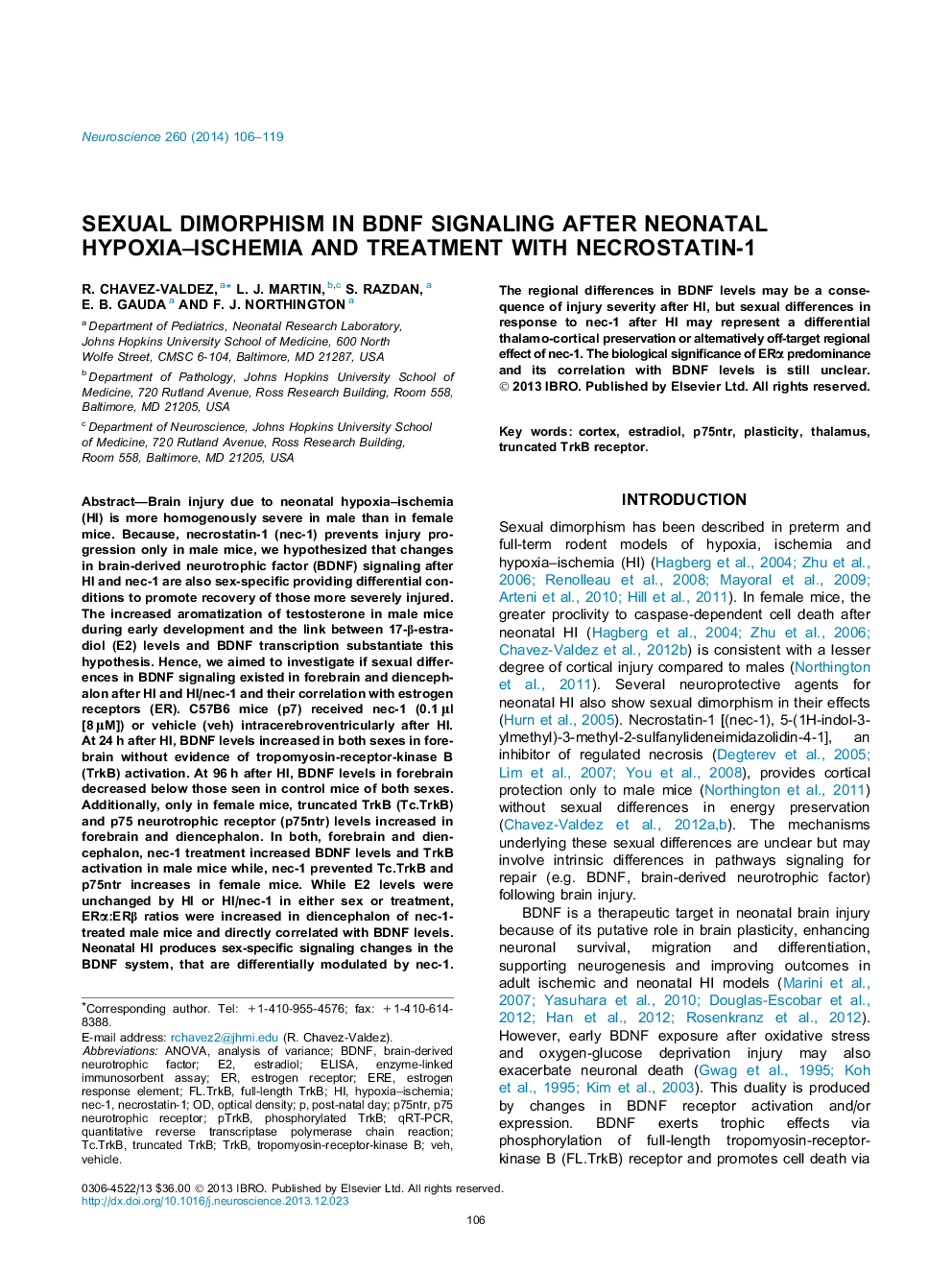| Article ID | Journal | Published Year | Pages | File Type |
|---|---|---|---|---|
| 6274098 | Neuroscience | 2014 | 14 Pages |
Abstract
Brain injury due to neonatal hypoxia-ischemia (HI) is more homogenously severe in male than in female mice. Because, necrostatin-1 (nec-1) prevents injury progression only in male mice, we hypothesized that changes in brain-derived neurotrophic factor (BDNF) signaling after HI and nec-1 are also sex-specific providing differential conditions to promote recovery of those more severely injured. The increased aromatization of testosterone in male mice during early development and the link between 17-β-estradiol (E2) levels and BDNF transcription substantiate this hypothesis. Hence, we aimed to investigate if sexual differences in BDNF signaling existed in forebrain and diencephalon after HI and HI/nec-1 and their correlation with estrogen receptors (ER). C57B6 mice (p7) received nec-1 (0.1 μl [8 μM]) or vehicle (veh) intracerebroventricularly after HI. At 24 h after HI, BDNF levels increased in both sexes in forebrain without evidence of tropomyosin-receptor-kinase B (TrkB) activation. At 96 h after HI, BDNF levels in forebrain decreased below those seen in control mice of both sexes. Additionally, only in female mice, truncated TrkB (Tc.TrkB) and p75 neurotrophic receptor (p75ntr) levels increased in forebrain and diencephalon. In both, forebrain and diencephalon, nec-1 treatment increased BDNF levels and TrkB activation in male mice while, nec-1 prevented Tc.TrkB and p75ntr increases in female mice. While E2 levels were unchanged by HI or HI/nec-1 in either sex or treatment, ERα:ERβ ratios were increased in diencephalon of nec-1-treated male mice and directly correlated with BDNF levels. Neonatal HI produces sex-specific signaling changes in the BDNF system, that are differentially modulated by nec-1. The regional differences in BDNF levels may be a consequence of injury severity after HI, but sexual differences in response to nec-1 after HI may represent a differential thalamo-cortical preservation or alternatively off-target regional effect of nec-1. The biological significance of ERα predominance and its correlation with BDNF levels is still unclear.
Keywords
truncated TrkBpTrkBnecrostatin-1TrkBp75NTREREqRT-PCRBDNFNec-1EstradiolThalamusanalysis of varianceANOVAEnzyme-linked immunosorbent assayELISApost-natal dayestrogen response elementBrain-derived neurotrophic factorCortexhypoxia–ischemiaQuantitative reverse transcriptase polymerase chain reactionvehVehiclePlasticityoptical densityEstrogen receptor
Related Topics
Life Sciences
Neuroscience
Neuroscience (General)
Authors
R. Chavez-Valdez, L.J. Martin, S. Razdan, E.B. Gauda, F.J. Northington,
